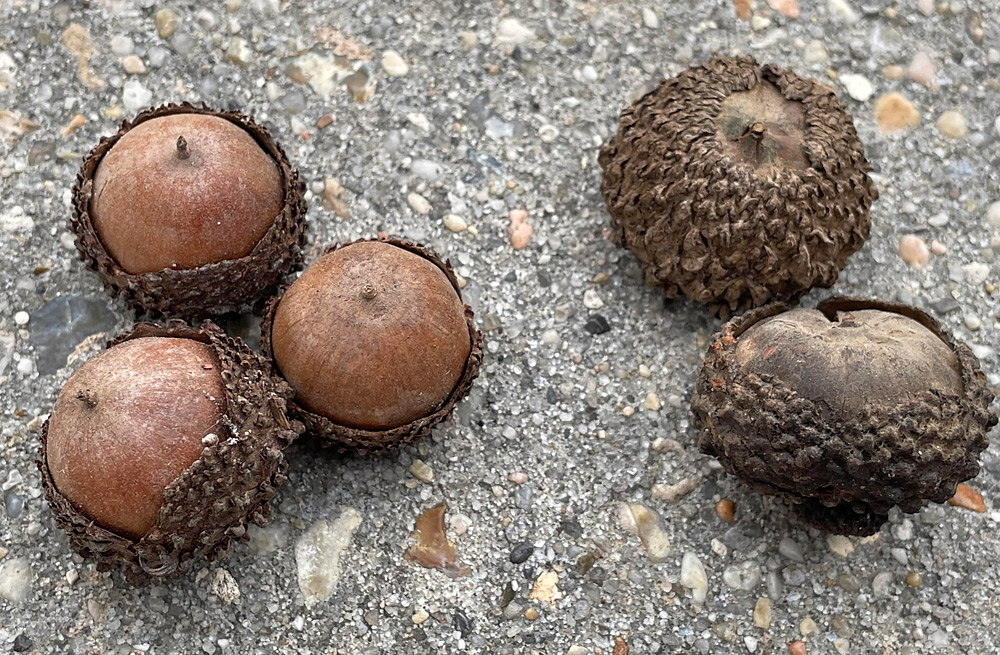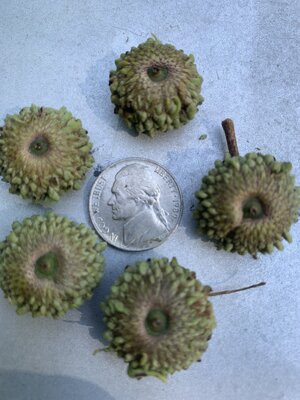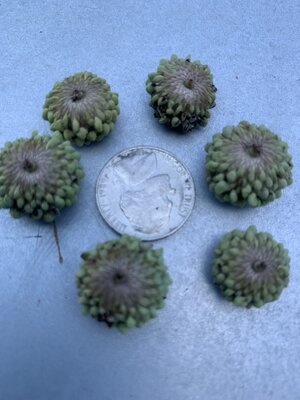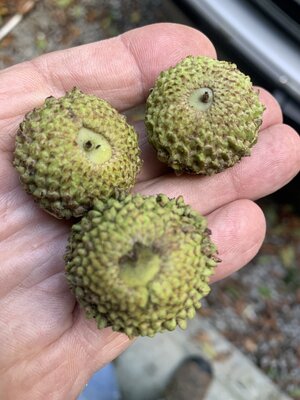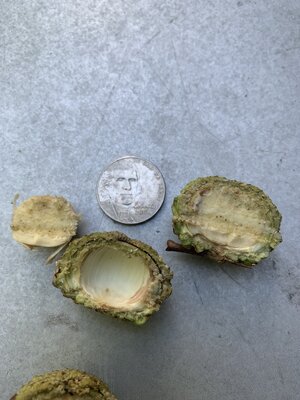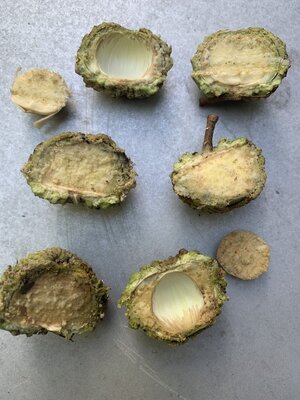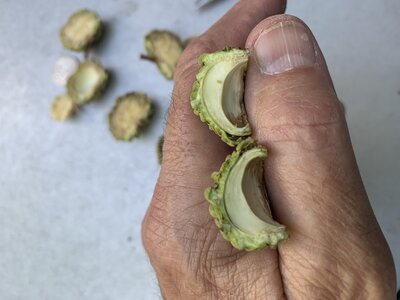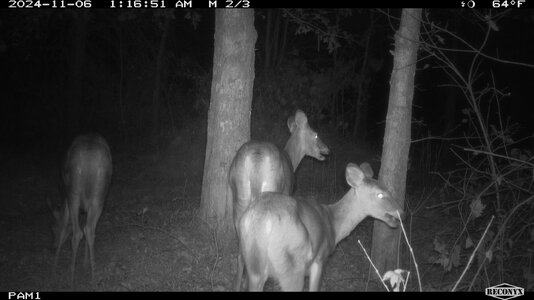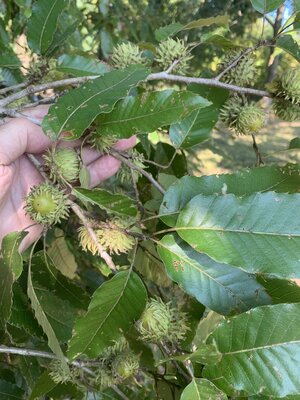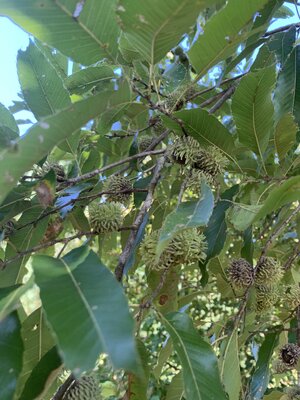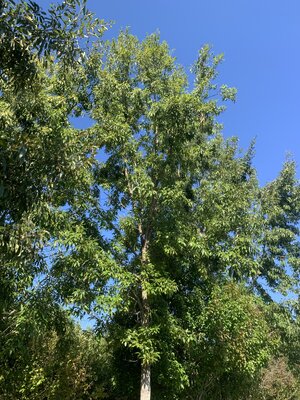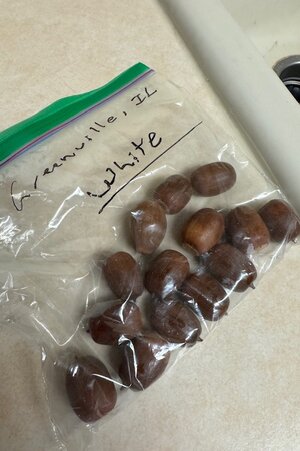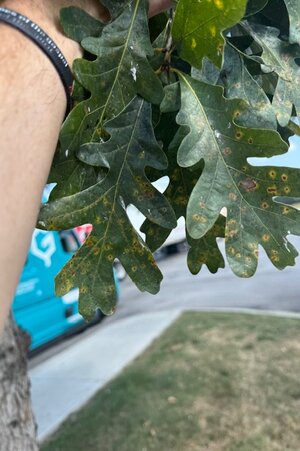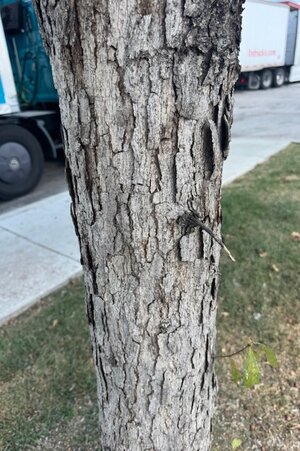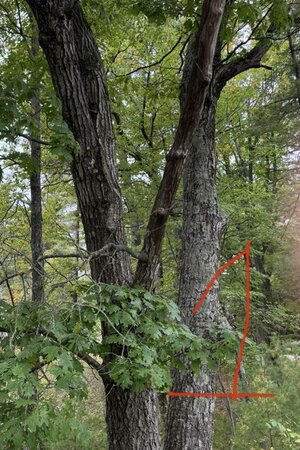Native,
What do the acorns look like on your overcups? I have grown them for a few years now, but have always collected acorns from trees from a local wildlife management area that routinely floods. The acorns are like the acorns on the right in the photo below. The cap usually covers almost the entire acorn and the pericarp/shell is very thick. Last fall I found an apartment complex that used overcups as landscaping trees. A couple of the trees dropped a lot of acorns into November and the acorns are on the left in the photo. The caps are not as thick, do not extend that far down the acorn, and the pericarp is not that thick. It is my hope that the seedlings from the apartment trees will be abundant producers and that the wildlife will like the thin walled, small capped acorns more. I should be able to report back on my hypothesis in 15-20 years.
As an FYI, I have found that removing the cap from overcup acorns speeds up the germination process by several weeks.
